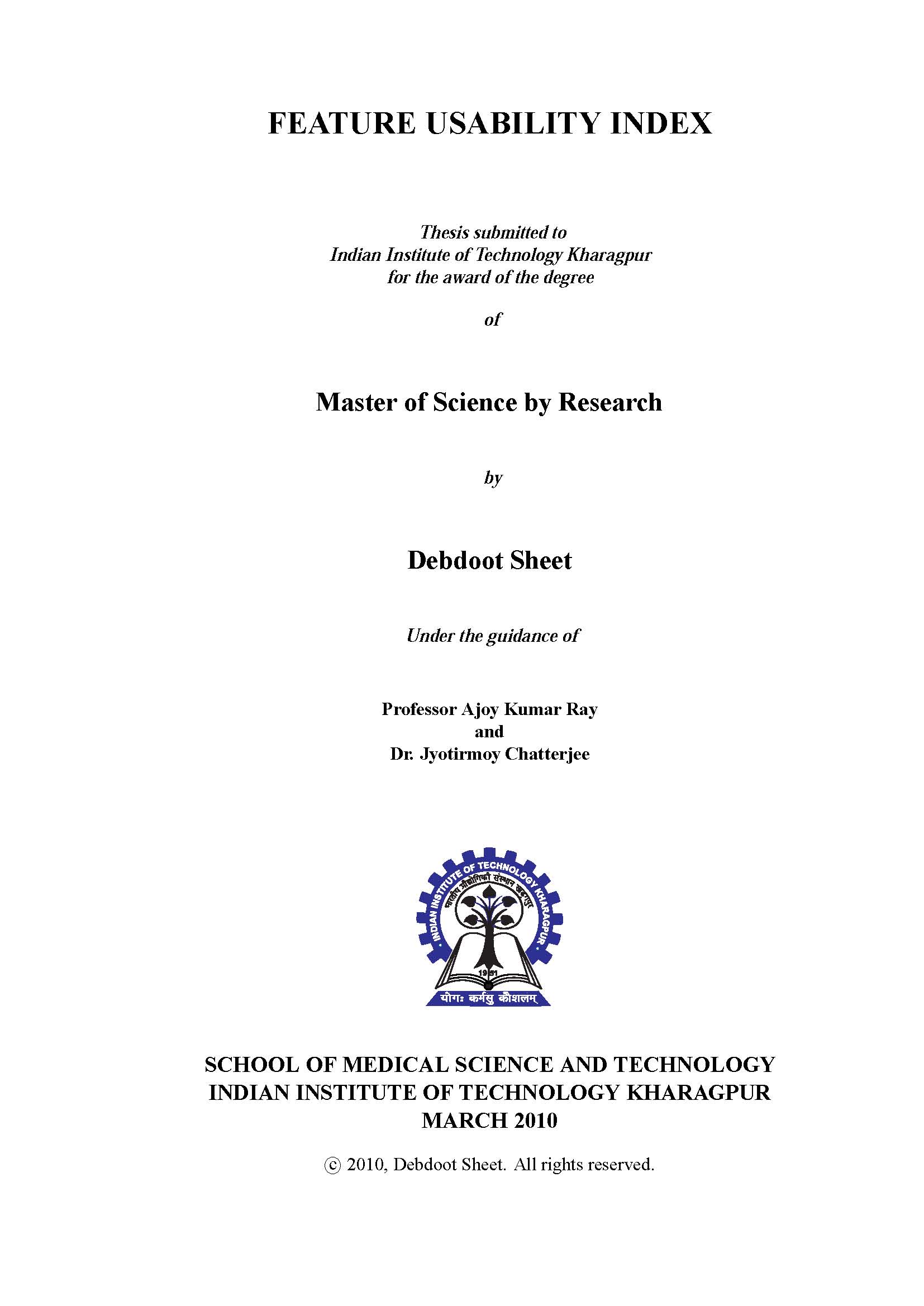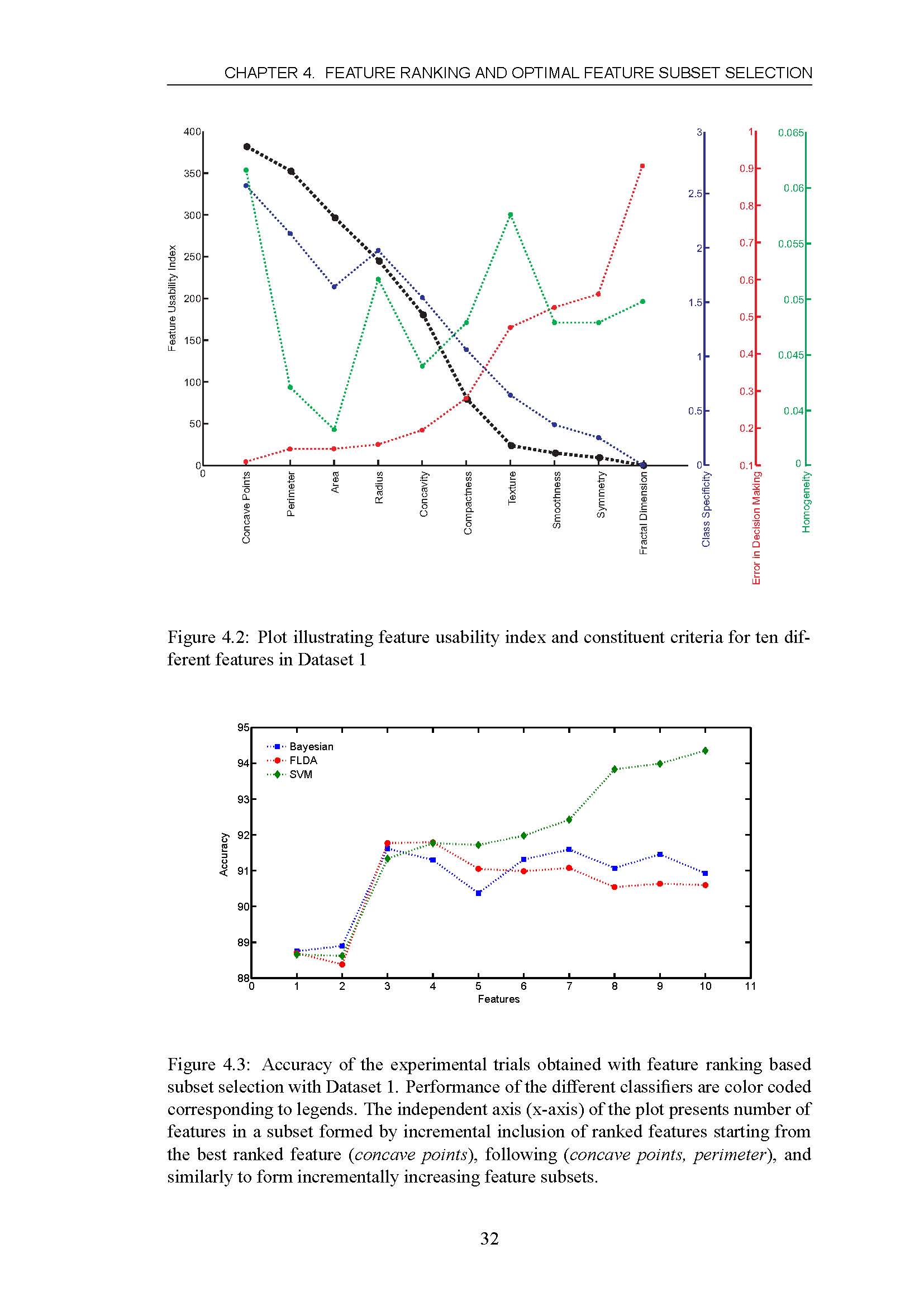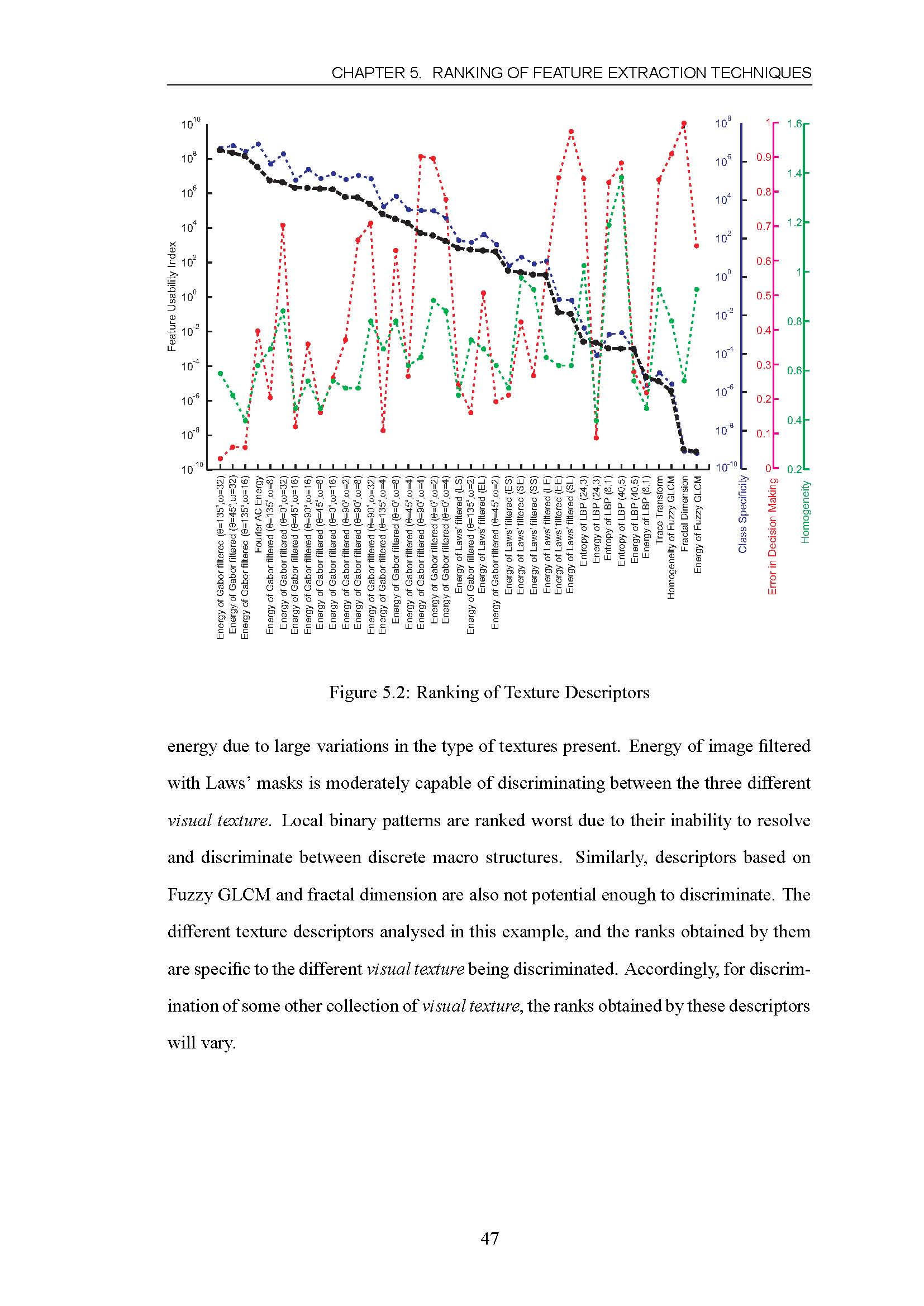M.S. | Thesis summary
Feature Usability Index



Feature selection as an area of interest within pattern recognition, deals with selection of a subset of attributes used in construction of a model describing observations. The purpose of this stage includes reducing data dimensionality by removing irrelevant and redundant features, reducing the amount of learning data, improving predictive accuracy and comprehensibility of a classification hypothesis. This thesis introduces feature usability index as a measure for evaluating classification efficacy of features and its application in feature selection. It is defined using measures of homogeneity, class specificity, and error in decision making. Homogeneity measures the extent of outlying observations, class specificity assesses the separation between distributions of different labeled classes, and error in decision making is computed using overlap in posteriori decision boundary. First application presents optimal feature subset selection through ordering based on feature usability index and involves a complexity of O(D log D) for D features. A comparative analysis with χ2 statistics for feature selection is also presented. Second application uses feature usability index for ranking and selection of feature extraction techniques for a specific linguistic feature. Third application presents a modification termed color usability index as a measure for predicting performance of image segmentation algorithms using a specific color space.
Publications
D. Sheet, A. K. Ray and J. Chatterjee, Feature Usability Index, Lambert Academic Publishing, Germany. ⌊ Amazon ⌋
D. Sheet, J. Chatterjee and H. Garud, "Feature Usability Index and Optimal Feature Subset Selection", Int. J., Computer Appl., vol. 12, no. 2, pp. 29 - 36, Dec. 2010. ⌊ IJCA Digital Library ⌋
D. Sheet, V. Venkatraghavan, A. Suveer, H. Garud, M. Mahadevappa, J. Chatterjee and A.K. Ray, "Statistical Tools for Evaluating Classification Efficacy of Feature Extraction Techniques", in Proc. 2nd Int. Conf. Digital Image Processing, pp. 697-700, 2010. ⌊ SPIE Digital Library ⌋